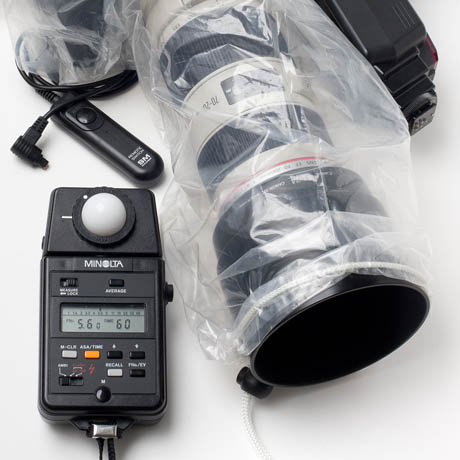In tricky environments or light conditions, various accessories will be required to get that perfect shot...

Le flash cobra
A cobra flash attaches to the top of the camera and is powered by torch batteries.
- Check that it is definitely compatible with your camera's through-the-lens (TTL) metering system
- Where possible, use a model with a head that will tilt in all directions (top to bottom, left to right), as pointing it at a wall or ceiling will give a softer light that is less harsh than with your camera's built-in flash pointing directly at the subject.
Remote shutter release
Allows you to release the shutter without touching the camera, thus preventing camera shake when taking the picture. The camera must be steadied on a tripod, bag or table. Before purchasing one of these devices, check that is compatible with your camera. Various types are available:
- wired, for use when you are next to the camera.
- wireless, for when you are standing further away from the camera, e.g. for shooting wildlife or sports pictures.
Light meters
With a handheld light meter you can measure the level of ambient light falling on your subject.
- The device displays the aperture and/or shutter speed settings that should be set on your camera (in manual mode) to get the correct exposure.
- Some light meters also include a flash meter function. These measure the amount of light reflected by a remote flash and provide an aperture setting only. They tend to be used especially for fashion or catalogue shoots.
Protective cover
Cameras are sensitive to dust and moisture. When you need to use your camera in dusty environments, in addition to a UV filter, fit a protective cover over your camera. The cover will not get in the way of the controls (e.g. using buttons, dials, zoom controls) and they come with a modest price tag (less than €10).
Recommended product:
Archival Photo Storage Boxes
